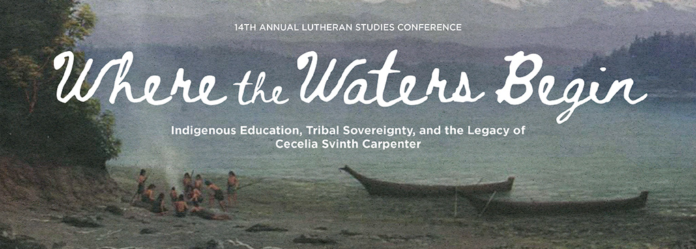On Thursday, September 26, Pacific Lutheran University (PLU) hosted their 14th annual Lutheran Studies Conference. This year’s gathering was titled “Where the Waters Begin
Indigenous education, Tribal Sovereignty, and the Legacy of Cecelia Svinth Carpenter”. PLU affiliates, Nisqually and Puyallup tribal members and elders, community members, and descendents of Ms. Carpenter attended the event in honor of the indigenous activism demonstrated today, as well as that of the past.
2024 marks the 170th anniversary of the 1854 Medicine Creek Treaty, 100th anniversary of 1924 Native American Voting Rights Act, 50th anniversary of the 1974 Boldt Decision, and 20th anniversary of the exoneration of Chief Leschi. Many of these remarkable and historic events can be attributed to the work of Carpenter, a PLU alumna and past elder of the Nisqually tribe. After achieving her Bachelor’s and Master’s degrees from PLU, Carpenter went on to teach in junior highs in Pierce County and was instrumental in the structuring of the K-12 education program, Since Time Immemorial. She also served as a secretary and historian working diligently to document and preserve stories, songs, photographs, books, and other collections of the Nisqually Tribe. In addition to her often personally funded research and projects, Carpenter published 15 books, some involving tribal natural resource rights, and helped build the legal case that eventually cleared Chief Leschi of the false murder conviction.
Alan Belton spoke to Carpenter’s reverence for knowledge as indigenous empowerment and justice and exemplification of the core values of PLU when awarding an Honorary Doctoral degree to the distinguished alumna. Following the ceremony, the stage was prepared for the keynote panel of which consisted of Nisqually Tribal Chairwoman Cynthia Iyall, Nisqually tribal member Annette Bullchild, artist Chris Gerber, and Puyallup tribal member Connie McCloud.
Bullchild, or ‘Netsy’, spent her time commending Carpenter for her out-of-the-box thinking that helped with law and mitigation to preserve and protect the Nisqually people. Netsy described herself as ‘a kid in a candy store’ when shuffling through Carpenter’s many handwritten documents and cursive notes. She has spent much time cross referencing Carpenter’s work in order to digitize the information for the public at large and create a more productive coding and referencing system to be used by tribes.
McCloud, who is first cousins with Netsy, began by verbally illustrating the creation story which grounded the audience in intention and emotion. The audience looked unto her with tearful eyes as McCloud told of the profound connection with Carpenter who voluntarily and consistently reached out to tell of any newly found familial and historical information. She then praised Carpenter for the justice she brought to the Coastal Salish peoples whose lands, rights, languages, and cultures were compromised by the genocide that occurred during colonization. McCloud sang, “It was genocide, the white people said these people don’t exist. But we, Carpenter and I, fought back and we won because we do exist. This allows our children to walk in and feel pride…to know that I have a right to be here…our kids will still have to face racism…but to tell our history from our voices is healing not only for our native people but for our entire communities.” She called for a continuity in the care for these communities built on the sacrifices and histories of the ancestors, the relations to others, and the hope for future generations.
This call to action exacerbated the audience’s excitement as Gerber’s portrait of Carpenter was revealed for the first time to the public. It displays someone who reaches through time and beyond, to show people’s faces before they were born and after they pass. The portrait, as well as the eventual 320 Garfield Street S. mural, will exhibit the ongoing and evolving commitment to access, support, restoration, and honor to the original and continuous stewards of



















